Significance
The Holy Name of Jesus Catholic Church in Lotsu was the first Catholic church building in central Taiwan. It was established as the main diocese of central Taiwan by missionary priests of the Dominican Order who arrived in the port of Takao (today’s Kaohsiung) and moved north as they preached the gospel. It was from here that the Church later began to expand to northern Taiwan, first to Luzhou, then eventually spreading throughout the greater Taipei area. The building was severely damaged in an earthquake and rebuilt in the early 20th century, and then again demolished and reconstructed later in the century. The rooms, doors, windows, and walls today are all made of Qingshui red brick and retain the style of the second, Japanese era, construction. A part of the building from this time was saved and remains today as the artifacts display room, preserving documents, and artifacts from the early days of the church. The church also safeguards documents printed on the first Latin alphabet printing press in Taiwan, messages delivered to priests via passenger pigeon requesting last rites for dying believers, and the Spanish-made church bell, or “Bell of God” (tiānshénzhōng). Both the church itself and its artifacts contain significant historical and cultural value.
History
The Holy Name of Jesus Church in Lotsu was built in the late 1800s, but Catholic missionaries had already been in the area for decades before then. By 1869, missions had been established in a number of places in central Taiwan, including Zhuzijiao Village (today’s Zhuzi Village in Changhwa County, which adjoins Lotsu Village). A Lotsu merchant named Tu Xin, who often traveled to southern Taiwan on business, was introduced to Catholicism there in 1875. He was so moved by the preaching of a Catholic priest that upon his return home, he convinced his friends and family to join in inviting Fr. Vincente Gomar of the Dominican Order to come and preach in central Taiwan. Sixty-three Lotsu residents were baptized the following year, marking the establishment of Catholicism in the area. In 1949, American Maryknoll missionaries who had been evacuated from China during the communist takeover of mainland China arrived in Taiwan. They took charge of the Lotsu Catholic Church when the Dominicans relocated to southern Taiwan. The church entered another new stage of development in 1987, when local Taiwanese Catholic priests took over management of the church. Today’s church is the third building to be constructed on the site, after the first building was heavily damaged in an earthquake and the second torn down and rebuilt to celebrate the church’s 100th birthday. It is a mix of Byzantine, Renaissance, and Romanesque architectural styles. In 2002, the only remaining structure from the church’s second incarnation, the artifacts display room built of Qingshui red brick during the Japanese period, was registered as a historic building.
Special Features

1A Church That Combines Multiple Architectural Styles The original Catholic Church in Lotsu was a Chinese-style building constructed in 1877. It was the first Catholic church in central Taiwan, built on a site purchased by Fr. Vincente Gomar for 110 yuan (the unit of currency at the time). The church was severely damaged during an earthquake in 1906 and reconstructed by Fr. Manuel Prat in 1912 using China fir and Taiwan cypress lumber. In 1975, to celebrate the church’s 100th anniversary, the old building was torn down and rebuilt into the design that can be seen today. The church building combines Byzantine, Renaissance, and Romanesque architectural elements.
The original Catholic Church in Lotsu was a Chinese-style building constructed in 1877. It was the first Catholic church in central Taiwan, built on a site purchased by Fr. Vincente Gomar for 110 yuan (the unit of currency at the time). The church was severely damaged during an earthquake in 1906 and reconstructed by Fr. Manuel Prat in 1912 using China fir and Taiwan cypress lumber. In 1975, to celebrate the church’s 100th anniversary, the old building was torn down and rebuilt into the design that can be seen today. The church building combines Byzantine, Renaissance, and Romanesque architectural elements.
2The Artifact Display Room The artifact display room is speculated to have been built during the reconstruction that followed the 1906 earthquake. Its simple facade consists of red brick walls with raised brick door and window casings, and exudes a sense of antiquity. The building is used to display documents and artifacts preserved since its construction, including texts produced by the first Latin alphabet printing press in Taiwan, a hundred-year-old church bell known locally as the Bell of God, certificates of end-of-life support group, and Chinese language hymns printed in the Latin alphabet.
The artifact display room is speculated to have been built during the reconstruction that followed the 1906 earthquake. Its simple facade consists of red brick walls with raised brick door and window casings, and exudes a sense of antiquity. The building is used to display documents and artifacts preserved since its construction, including texts produced by the first Latin alphabet printing press in Taiwan, a hundred-year-old church bell known locally as the Bell of God, certificates of end-of-life support group, and Chinese language hymns printed in the Latin alphabet.
3The Bell of God (tiānshénzhōng) The Bell of God (tiānshénzhōng), the church bell that can be viewed in the artifact display room, weighs approximately forty kilograms and incorporates eight different metals and minerals—gold, silver, copper, iron, jade, cast iron, lead, and tin. Because of this, it is also known as the Bell of Eight Treasures. It was brought from Manila by a Spanish Catholic priest in 1882. Due to materials shortages toward the end of World War II, the Japanese military plundered metal implements throughout Taiwan, and the Lotsu villagers got into a clash with them over their efforts to confiscate the bell. At the time, very few people in the Lotsu area had a clock, and the residents ordered their daily routines according to the ringing of the bell.
The Bell of God (tiānshénzhōng), the church bell that can be viewed in the artifact display room, weighs approximately forty kilograms and incorporates eight different metals and minerals—gold, silver, copper, iron, jade, cast iron, lead, and tin. Because of this, it is also known as the Bell of Eight Treasures. It was brought from Manila by a Spanish Catholic priest in 1882. Due to materials shortages toward the end of World War II, the Japanese military plundered metal implements throughout Taiwan, and the Lotsu villagers got into a clash with them over their efforts to confiscate the bell. At the time, very few people in the Lotsu area had a clock, and the residents ordered their daily routines according to the ringing of the bell.
4The Stone PlaqueThe church originally had a stone plaque hanging over the door with the phrase “By imperial command show respect to the religion” (fèngzhǐ jìngjiāo), which was bestowed by Emperor Guangxu of China. Government officials were required to dismount their vehicles when passing by to show respect to the church and Catholicism. Unfortunately, the original plaque was lost. A replica was made by Fr. Lin Tian-de (1952 – present) in commemoration of the honor. The replica is currently placed under the sculpture of Mary.
Reminders
The artifact display room exhibits documents and artifacts related to the development of the Catholic church in Taiwan throughout the Qing dynasty, the Japanese occupation, the post-war era, and the present day. The room also has in its collection the Bell of God, old lease documents, death records of congregation members, and collections of Chinese language hymns printed in the Latin alphabet. Those wishing to arrange a visit are requested to book a tour in advance by telephone.
Panoramic
Directions